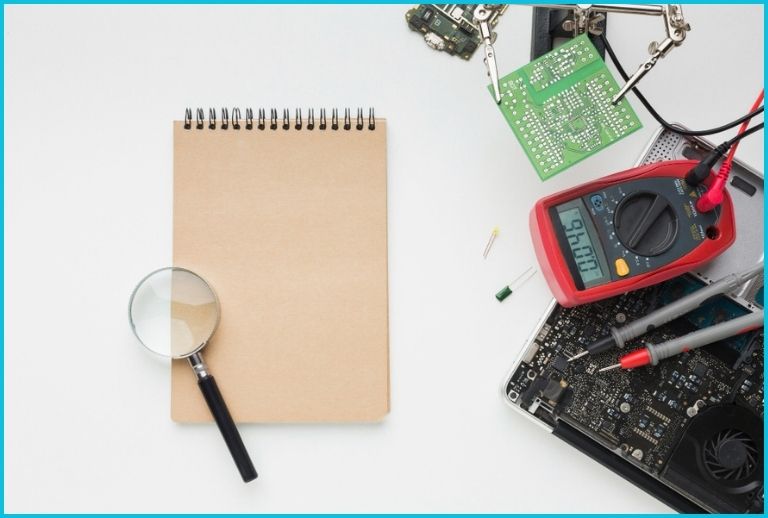How to avoid Hardware Failures in servers
Avoiding hardware failure in servers is crucial for maintaining business continuity and ensuring data integrity. Hardware failure can lead to downtime, data loss, and security vulnerabilities. Below are key strategies to minimize the risk of hardware failure in servers:

Choose High-Quality Hardware
Invest in Enterprise-Grade Components: Servers need to be more reliable than consumer-grade hardware. Choose high-quality, enterprise-grade components such as CPUs, memory, storage, and network equipment that are designed for continuous operation and durability.
Use Redundant Power Supplies: Ensure that the server has redundant power supplies so that if one fails, the other can continue to power the system without interruption.
Implement Redundancy
Redundant Array of Independent Disks: Use RAID configurations for your storage devices. RAID can help ensure that data is not lost if a single drive fails, as data can be recovered from other disks in the array.
Redundant Network Interfaces: Use multiple network interface cards (NICs) to maintain connectivity even if one interface fails.
Clustering and Failover: Implement server clustering and failover strategies to ensure that another server can take over if one experiences hardware failure
Perform Regular Maintenance
Inspect Hardware Components: Regularly inspect physical components such as cables, power supplies, fans, and drives for wear and tear.
Clean the Server Environment: Dust and debris can cause hardware failure by clogging ventilation and causing overheating. Regularly clean and maintain the server environment to prevent this.
Monitor Temperature and Humidity: Keep servers in a temperature-controlled environment with proper airflow to prevent overheating. Servers should operate in a cool, dry room with adequate ventilation.
Monitor Hardware Health
Use Monitoring Tools: Deploy server monitoring tools that can detect early signs of hardware failure. These tools can monitor CPU temperature, disk health (e.g., SMART data), memory usage, and other critical metrics.
Set Alerts for Critical Thresholds: Set up automated alerts when certain hardware metrics exceed safe thresholds, such as temperature spikes, high CPU usage, or failing hard drives.
Regularly Update Firmware and Drivers
Update BIOS and Firmware: Manufacturers often release updates to BIOS and firmware that include bug fixes, security patches, and performance improvements. Keeping firmware up to date can prevent issues that may cause hardware to fail.
Update Device Drivers: Ensure that all drivers for your server components (e.g., NIC, RAID controller, storage devices) are up to date to maintain hardware stability and performance.
Use Uninterruptible Power Supply (UPS)
Protect Against Power Surges: A UPS not only provides backup power in case of outages but also protects servers from voltage spikes and power surges that could cause hardware damage.
Graceful Shutdown During Power Outages: A UPS can help your server shut down properly in the event of a prolonged power outage, preventing data corruption and hardware damage.
Conduct Regular Backups
Automated Backup Solutions: Regularly backing up server data will not prevent hardware failure but will protect your business from data loss in the event of failure.
Test Backup Recovery: Ensure that backups are not only performed regularly but also tested to ensure that the data can be recovered successfully when needed.
Avoid Overloading Hardware
Distribute Workloads Across Servers: Avoid overburdening a single server with too many processes or users. Distribute workloads across multiple servers to balance the stress on your hardware.
Monitor Resource Utilization: Continuously monitor server resource usage (e.g., CPU, memory, disk I/O) to avoid pushing hardware components beyond their operational limits.
Use Virtualization and Containerization
Isolate Services and Applications: By using virtualization (e.g., VMware, Hyper-V) or containerization (e.g., Docker), you can isolate different services and applications. This reduces the load on physical hardware and helps prevent complete server failure in case one application causes issues.
Live Migration: Virtual machines (VMs) can often be migrated from one physical server to another with minimal downtime in case of hardware issues.
Have a Disaster Recovery Plan
Create a Failover Strategy: Have a disaster recovery plan in place that includes procedures for switching to backup servers or datacenters if a hardware failure occurs.
Implement Offsite Backups: Regularly backup critical data offsite to ensure that it remains secure even if on-site hardware is compromised.
Replace Aging Hardware
Proactively Replace Components: Hardware components, especially hard drives and power supplies, have a finite lifespan. Regularly replace aging hardware components before they fail.
Follow Manufacturer Guidelines: Follow the manufacturer’s guidelines for maintenance and hardware lifecycle to know when to retire aging hardware.
Use Proper Cooling Solutions
Install Proper Ventilation and Cooling Systems: Servers generate a lot of heat, and without proper cooling, hardware components can overheat and fail. Install high-quality fans, heat sinks, and air conditioners to maintain a stable temperature.
Monitor Server Room Temperature: Ensure that the server room temperature is consistently maintained, usually between 68°F to 72°F (20°C to 24°C).
Conclusion
Preventing hardware failure in servers involves a combination of using high-quality hardware, performing regular maintenance, monitoring hardware health, and creating redundancy. By implementing these strategies, you can significantly reduce the risk of hardware failure, ensure data integrity, and keep your business running smoothly without interruption. Regular backups, proactive hardware replacement, and proper server environment management are essential elements in avoiding costly server downtime and data loss.